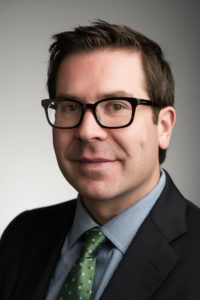One of the first steps of the systems engineering process is to determine what the customer’s needs are. The Systems Engineering Program at CSU puts a strong emphasis on teaching students professional skills to succeed in industry and government, and to fulfill the workforce needs of regional partners, national labs and local companies.

To continue to grow the Systems Engineering program and equip students with relevant skills, the program is welcoming a new faculty member this fall, along with a new course that has a strong focus on energy.
James Cale, who led the Distributed Energy Systems Integration Group at the National Renewable Energy Laboratory in Golden, Colorado, joined CSU as an associate professor in systems engineering on July 1. He will teach the program’s new course, Coupled Electromechanical Systems, starting this fall. The course will center on the fundamental mechanics of energy conversion between electrical and mechanical systems.
Cale brings to CSU over 10 years of industry and government experience, and firsthand knowledge of systems engineering problems in practice.
The Systems Engineering Program is known for its versatile delivery model, with instructors teaching courses delivered simultaneously on campus and online. This blended model provides increased access to students in the local community and at a distance, and is inspired by the university’s land-grant heritage.
“Continually adding breadth, depth, and capacity to the Systems Engineering Program is consistent with our strategic plan to meet the needs of the region, nation and planet,” said Ron Sega, director of the Systems Engineering Program.
Starting with the big picture
Systems engineering allows for a more systematic approach to complex product design, which is a beneficial perspective for engineers who are sometimes used to focusing only within one discipline. Design architecture, reusability, modularity and hardware/software integration are examples of concepts Cale hopes to implement into his course curriculum.
“Rather than starting out with designing subsystems independently, systems engineering is a way to step back and look at the project’s overall requirements, let those flow down to the subsystems, and examine tradeoffs to best meet the overall system objectives,” said Cale.
Being able to see the big picture first is especially relevant to the development of energy systems for the electric grid, which is where much of Cale’s industry experience originates. With a systems engineering perspective, there is ample room for systems thinking in the field as the nation’s power grid becomes increasingly complex and integrated.
“There’s a lot of potential to better couple and co-optimize energy systems to minimize energy loss and the use of fossil fuels,” Cale said. “To support the grid of the future, we need to better integrate electrical, mechanical/thermal, chemical, and other types of energy subsystems to maximize efficiency, effectively leverage distributed sensing and control, and provide better physical and cyber security.”
Examining the reasons why engineering projects fail provides good motivation for the study of systems engineering. During his tenure at CSU, Cale hopes to equip students with the skills to better design engineered systems, which he believes will help students in their careers while being more valuable to their organizations.
“Systems engineering overlays a rich set of skills on top of an undergraduate degree that is really about how to do engineering well. This often takes years to learn in practice, and is rarely formalized,” he said. “The Systems Engineering Program is a great place for students to learn these concepts from faculty who have applied these principles in practice.”